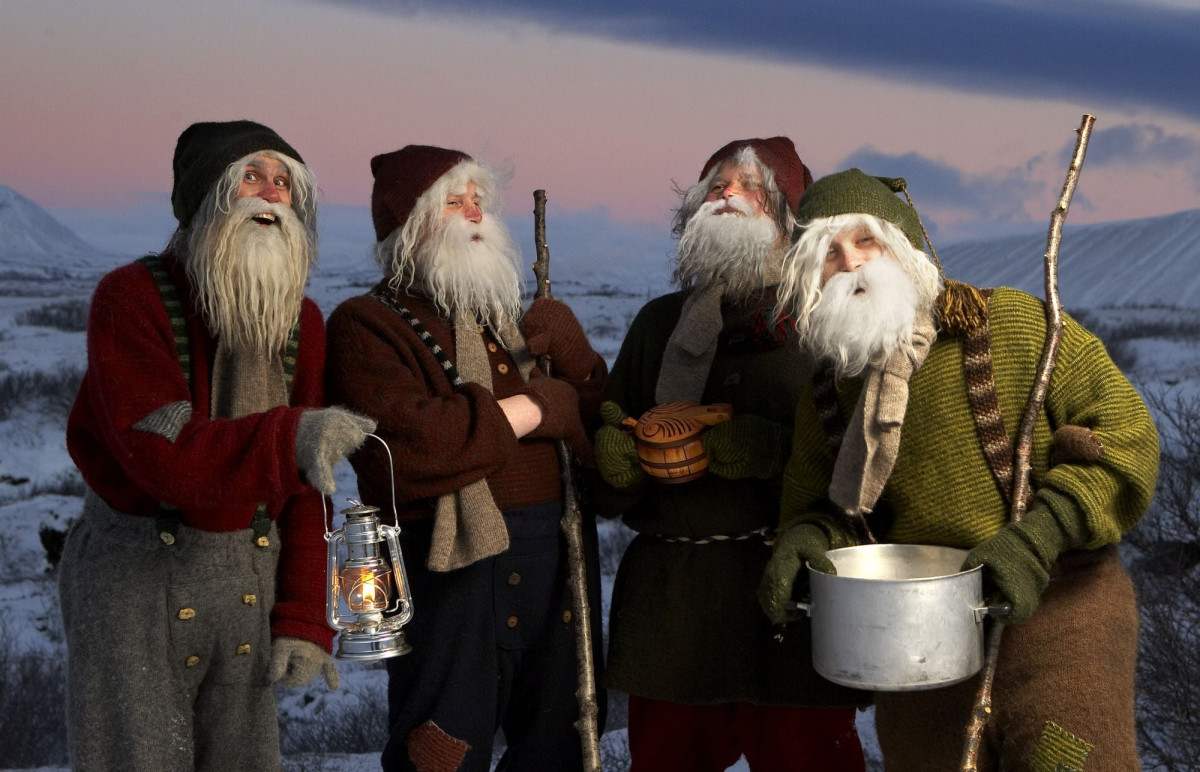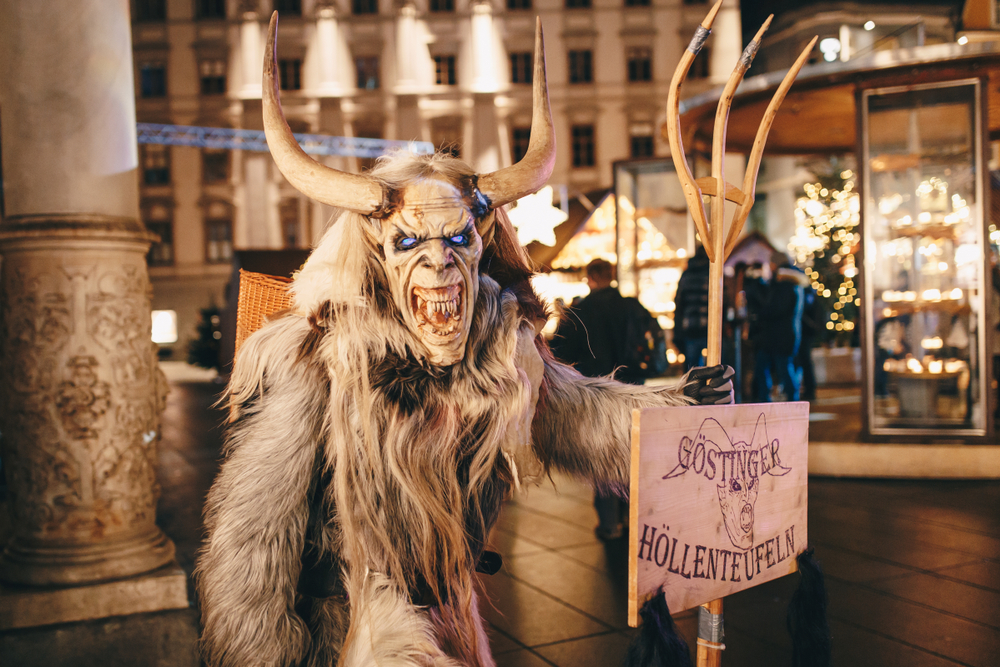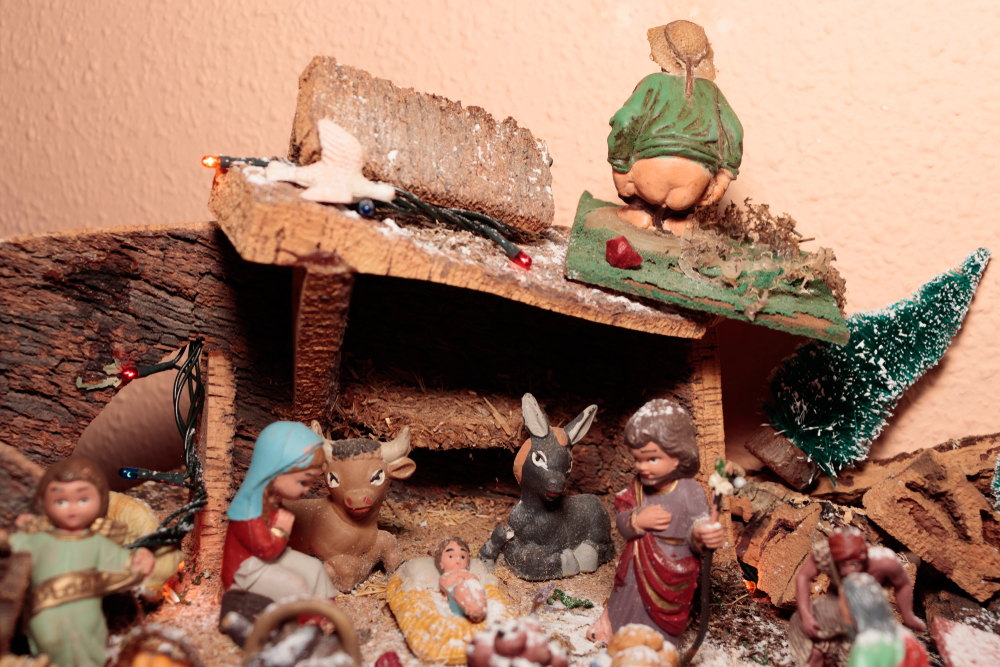Our experts weigh in on three unusual Christmas traditions from their travels.
What comes to mind when you think of Christmas? It is likely an image of Santa Claus delivering presents under the tree with the help of his adorable reindeers. He has a jolly laugh emanating from his belly that’s far too full of milk and cookies. He lives in the North Pole, a geographical mystery, and he has the same handwriting as your mother. Outside of the mainstream North American customs, however, there are many different countries that each have their own interpretations and customs leading up to the holiday season. Here is a deep dive into three of the most unusual Christmas traditions that we’ve encountered.
Iceland’s 13 Christmas Trolls

Whereas North America has one Santa Claus, the story in Iceland is just a bit different. Instead of jolly fellow, they celebrate with 13 Christmas trolls, the Yule Lads. One by one they come down from their home in the mountains, one on each night for the two weeks leading up to December 25.
Kids place a shoe on their bedroom windowsill each night with the hope of receiving a gift or candy from the troll. If they’ve been misbehaving, the troll will leave a stinky rotting potato instead. All 13 trolls are troublemakers and would certainly be on Santa’s naughty list. Each troll has a mischievous side, a signature move, and it usually involves food – like Pottaskefill who steals leftovers from pots when he arrives on December 16. Bjúgnakrækir will hide in your attic and steal all of the smoked meats when he comes to town on December 20.
All of the trolls are brothers. Their mom is Gryla, a huge troll who searches for bad kids to add to her stew and will plop them in alive. With a threat like that, it’s really no wonder all 13 of her sons disappear over Christmas.
Beginning on Christmas morning, the Yule Lads slowly make their way home one-by-one in the order they arrived. Hurðaskellir leaves just before ringing in the New Year. He’s the one who’s been stomping around slamming doors in the middle of the night, his signature move. Glad he’s gone. As scary as this sounds, the folklore aspect of the Yule Lads is portrayed in a lighthearted manner, and Gryla probably never makes stew anyway. Every kid in Iceland is just as excited on December 12 when the first Yule Lad arrives as they would be if it were Rudolph and Santa on the roof. Gleðileg jól (Merry Christmas) from Iceland!
Austria’s Pagan Rituals

What started off as a wintertime pastime where the attendees would try to outrun a man dressed as Krampus (and they had to be drunk, so he’d have a reason to catch them…) has advanced into a much bigger event. This is not a cute Christmas event – it’s a rollicking event that takes place at night with thousands of people dressed in terrifying Krampus costumes, demonic masks, horns, whips, chains, and much more. Basically, the more macabre, the better. On one side, there are Christmas markets with gingerbread and mulled wine being sold, and on the other, post-collegiate and college-age locals run through the streets in an event as big as the Mardi Gras Parade. In Salzburg alone, over 200 bars prepare party plans, pub crawls and costumes.
You’ll find pagan rituals being casually orchestrated pretty much everywhere. The parade is a once-in-a-lifetime-experience and the inevitable post-event pub crawls are, well, let’s just say…unforgettable. Make sure you layer up, stay away from the marchers’ whips and always carry the address of your hostel or Airbnb with you.
Catalonia, Spain and the Defecator

Head to Catalonia during the weeks leading up to holiday season and you’ll find plenty of Christmas spirit. From small coastal villages to its capital city of Barcelona, towns squares and plazas are decked out with symphonies of lights, aromatic markets and festive colors. You’ll also find traditional nativity scenes with nothing out of the ordinary – Mary, Joseph, baby Jesus and the Three Wise Men. Take a closer look and you’ll also spot the caganer (literally the “defecator”) casually taking care of his business.
The young man is dressed in a white shirt, black trousers and a barretina, a classic red Catalan cap. The traditional figure isn’t necessarily meant to be sacrilegious, graphic or even rude, but rather an attempt to incorporate lighthearted humor into something that was traditionally very serious, the Nativity. While the origins of the tradition are somewhat murky, the reason it’s carried on to this day is quite clear. The idea of defecating has long been linked to good luck, health, fertilization and prosperity in the upcoming year.
Head to any Christmas market or town square across Catalonia and you’re guaranteed to find caganer figures as a mainstay within nativity scenes, Christmas markets and town squares–poop included. There also won’t be any shortage of small porcelain caganer figures for sale, as well as amusing imitations of famous political leaders and FC Barcelona superstars likewise copping a squat.
As it turns out the caganer isn’t the only defecation-based festive tradition in Catalonia. December also marks the time in Catalan homes where you’ll find the caga tió (literally “defecating log”) or Tió de Nadal (“Christmas log”). Originally a piece of dead wood, the smiling, hollowed-out Christmas log is decorated with two little stick legs, a smiling face and a little red hat.
The tradition begins on December 8 on the Day of Immaculate Conception, where households with young children begin to “feed” the log every night. They usually provide the caga tió with a blanket to keep warm during the cold weeks leading up to the holidays. On Christmas Eve, families place the Tió de Nadal, full from weeks of feeding, in front of the fireplace where members of the house take turns bashing the logs with sticks and commanding it to defecate out presents, candies and wafers. The bashing continues for a while as traditional songs about the log are sung.
Caga tió / poo log
Caga torró, avellanes i mató / poo nougat, hazelnuts and mató (cheese)
Si no cagues bé / if you don’t poo well,
et daré un cop de bastó / I’ll hit you with a stick
Caga tió / poo log
The end of the hitting session is marked by the arrival of a stinky herring. This prompts the removal of the blanket and the delightment of the kids at the sight of presents and treats. The caga tió is then burned in the fireplace and Christmas is celebrated.